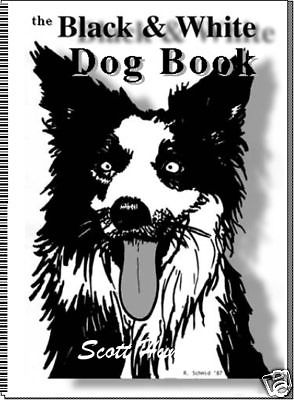I’ve been very lucky with my dogs – they are all very well behaved and I rarely have cause to growl at them. It’s been two years since I last had a pup, but I felt confident that Mac would simply fall into line. How quickly we forget!! It seems that I was definitely in for a rude awakening. Scott Hunt, dog trainer and author of The Black and White Dog Book, is back to remind us about the Culture Shock that can be delivered by a new (albeit very cute) dog.
So your dog keeps doing things you don’t like; even though you’ve explained repeatedly how dismayed you are at the bad behaviour?
Every individual and every case is different, but it usually comes down to the same formula: start with a happy dog, then communicate your wishes in a way that your dog understands.
A happy dog is one who is allowed to be a dog; it has a place in a team with a clearly defined leader and enforcer – the leader decides when, where and how the team travels and leaves food for subordinate members. The enforcer gets upset when rules are broken and changes the situation accordingly.
In a wolf pack these two roles are often taken by separate individuals; in human society, dogs are accustomed to finding them performed by a single individual, and often delegated to subordinate team members in the boss’s absence.
So you should take your dog with you whenever you can. Even down to the gate to check the post box. You must let it smell stuff. You should feed it your leftovers. Now you just have to let it know what you don’t like.
It would be nice if we could just email the instructions or put a list on the fridge, but dogs don’t get that. We need to react to behaviour we don’t like when it happens – or more likely immediately after or just before it happens.
We need to use sound, scent and body language in place of words. If you are walking in the street and your dog steps off the footpath, a tug on the leash and a sharp sound will get the message across – as long as you are patient and consistent.
Remember that a dog’s neck is it’s natural control point – grip a dog here as it’s mother used to and it will know you are laying down the law. Grumble – sound like an angry dog. Get tense and try to smell angry. Stamp your foot to let your dog know you are serious.
Reinforce good behaviour with praise. Don’t confuse this with edible treats or you will soon have an unhealthy, confused dog. I use healthy natural dog treats in specific situations, but never to get a dog’s attention or persuade it to stay with me.
A dog is not a wolf, but no way is it a human; we have spent thousands of years influencing the evolution of the wolf into a creature that can live productively in human society. We have bred a companion that yearns to be a useful team member and shuns the job of a leader.
Every team needs a leader. A dog knows this instinctively and does not want the job for itself, so a good dog owner / trainer must take charge and if a dog is to understand what the boss wants, it needs to get the information in a language it understands.
Don’t be afraid to act grumpy if your dog misbehaves; this is animal language. Do it consistently and never hold a grudge. Bet patient. They are special creatures who have sought our approval for millennia. They have amazing talents and character and deserve our respect; that means using the language they understand.

